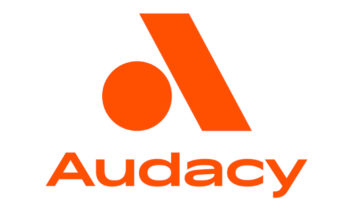The PMD680 Steps Up to the Competition and Expands the Company’s Line of Field Recorders
(click thumbnail)
The Marantz PMD680 PC Card Recorder is the manufacturer’s second offering in the portable digital recording line.
Like the recently released PMD650 MiniDisc, the PMD680 will be immediately familiar to anyone who’s ever been out gathering sound for radio.
The form-factor and overall “look” of the old cassette units have been retained. But the new PC Card technology promises to be as much of an advance over MiniDisc as MD has been over the analog cassette.
By using the common computer storage format, this recorder becomes a natural extension of a DAW. Audio can be dumped directly into the typical digital workstation. If you need to get a story up fast, there is no point in having to wait while loading audio in real time, a perennial problem with other formats.
Though others manufacturers have been working along these lines, Marantz may come to dominate this new category with the PMD680, much as it did earlier with cassettes.
PRODUCT CAPSULEThumbs Up:
+ Great audio quality
+ Ample I/O
+ Rugged
+ Simple and familiar controls
Thumbs Down:
– High cost of PC card memory
– Bit-rate layout
Contact: Marantz Professional/Superscope Technologies Inc. in Illinois at (630) 820-4800, fax (630) 820-8103 or visit the Web Site at www.superscope-marantzpro.com
Connections made
The PMD680 is a mono-only recorder with ample I/O to work in most any pro setup. On the right side, XLR and 1/4-inch mono mic connectors are augmented with line-in and -out RCA jacks. An RJ-11 telephone jack is built in.
The multiple I/Os can be handled only one source at a time, selected by a switch on the top control panel. The left side has an additional S/PDIF digital-out RCA jack.
As with the earlier designs, the 1/4-inch headphone jack is placed conveniently on the front panel and an integrated mic is on top. The unit runs on eight AA batteries or a special rechargeable power pack.
Eating eight alkaline cells for two hours of recording can be costly, so the power pack is a necessity. The power pack can be recharged in the unit. A 13 V plug-in power supply is included.
The only things you might add would either be a USB or 1394 (FireWire) connector. But that really isn’t the way to move audio data in and out, given the convenience of the card format.
The front-loading PC card slot makes it simple to pop out the static RAM cards and feed them into a card reader attached to a desktop computer or into the PC card slots built into most laptops.
At first, the array of nine switches, five buttons and an on/off switch located on the top for setting the basic controls seems a bit involved. Just a few minutes with the manual clears up any mystery.
Most of these options are as simple as whether to turn off the built-in speaker or select the input source. Again, some of these are carryovers from earlier models, like the record level that chooses between manual or automatic level settings or the mic attenuation – 0, -15 dB or -30 dB.
The recording mode switch is familiar, although the SP/MP/LP settings hide the difference between this and more conventional recorders. This switch chooses between different levels of bit rates for the formats supported – MP2 (MPEG 1, Layer II), Broadcast Wave (BWF) or standard PCM WAV files. The buttons under these allow for renumbering or erasing tracks as well as other light editing functions.
Unlike some digital recorders, the Marantz does not bother with extensive editing capabilities. That is what the DAW is for. For those that insist, a simple EDL marking system allows different sequences of cuts to be played.
The “transport” controls are simple enough – forward/reverse, play/pause, record/mark and stop. Finally, the backlit display does a good job with metering, showing time elapsed and time remaining.
The most complicated aspect of the controls is setting the presets. Changing recording formats requires altering these.
After deciding between MP2, Broadcast Wave and WAV, the three choices in bit rates set by the top switch can be changed. MP2 compression levels in the SP setting can range from 192 to 64 kbps; on the LP (long play) goes as low as 32 kbps.
Most users are likely to find a single happy medium for their purposes. The presets also can be used to change the ID numbers built into BWF files.
Field use
After popping in a PC card and powering up, the PMD680 takes a look to see if the card is properly formatted. This is not quite as fast as snapping a cassette in – the user has to wait a few seconds.
Reformatting a 32 MB card required turning the unit off, then putting it back on while holding the format/erase button. It took just a few moments and then it was ready to record. The factory default recording format is MP2.
After some experimentation with a beyerdynamic M58 and an ElectroVoice RE-11 mic, MP2 seems to be right for most uses. While I will admit to a preference for uncompressed audio, PCM recording eats way too much storage to be practical with pricey PC memory cards.
While 400-plus MB cards are available, they cost as much as $1,000. This is even harder to justify given that I am hard-pressed to differentiate between uncompressed files and those captured at moderate levels (e.g. 128 kbps) of compression. At that rate – about 10:1 compression – audio takes up about 1 MB per minute.
A pair of 64 MB cards could tackle most events. Drop down to 64 kbps and double recording capacity with only a moderate loss in quality. At the LP record setting, highs were noticeably missing at 32 kbps. Even so, speech was quite intelligible. For AM broadcasts, it might do fine and provide terrific economy.
The only issue I had with the unit itself was some confusion over the way the presets are laid out. The way it’s organized is that the user first selects between PCM/MP2/BWF, then enters a submenu to choose the bit rates for the format. But choosing bit rates is really geared to MP2 and not PCM.
PCM quality is about sampling rates and bit-length (e.g., 16-bit, 44.1 k). Here, the PCM “bit rate” is 768 kbps. But the submenu can change that. Unfortunately, PCM recordings made at other rates were unidentifiable when transferred to the computer.
According to Marantz, this layout is for future compatibility with the WAV format. For now, the better way to set up for PCM recording is to set the top menu for MP2 and then select the 762 kbps rate (uncompressed) as one of the options. But the submenu can change that.
Unfortunately, PCM recordings made at other rates played back fine in the unit but were unidentifiable when transferred to the computer. Again, the way to avoid this pitfall is to stick with the MP2 or BWF presets.
The real joy here was snapping the PC Cards out and putting them into a laptop. The cards were automatically identified as an additional drive and either could be drop-and-dragged into the hard drive or opened directly by audio editing software.
The WAV files are easy for most any audio software to handle. MP2 compatibility is somewhat rare. Still, Sonic Foundry’s Vegas Audio handled it easily. Again, all but the lowest bit rates sounded just fine for radio production.
Of course, the real-world test is bouncing this around for a few weeks in the careless hands of various individuals out covering assorted assignments. The Marantz is too new to have much of a track record as far as such ruggedness. But compared to the cassette units, this is likely to be far more durable.
With few moving parts, little can go wrong mechanically. The plastic case seems able to handle a bit of abuse. As long as the circuit boards do not crack and the unit does not end up in the drink, it should hold up well.
The upshot: this new Marantz is a winner. But for a few minor qualms, it is a straightforward recorder that is well-thought-out and will be familiar to those who have been raised on the company’s cassette units.
The hardest part for many is the fact that MD has only recently become the format of choice. But the MP2 capabilities here give quality and flexibility that MD’s ATRAC can’t touch. Add the standard PC Card format’s easy interface with computers and there’s no contest.
At $1,249 this is a nice investment. Of course, if stereo production is your thing, that is another matter. However, Marantz will soon release a stereo version of the unit called the PMD690 weighing in at $1,499.
For field reporters grabbing sound and running back to deliver the goods, this is the way to go.







